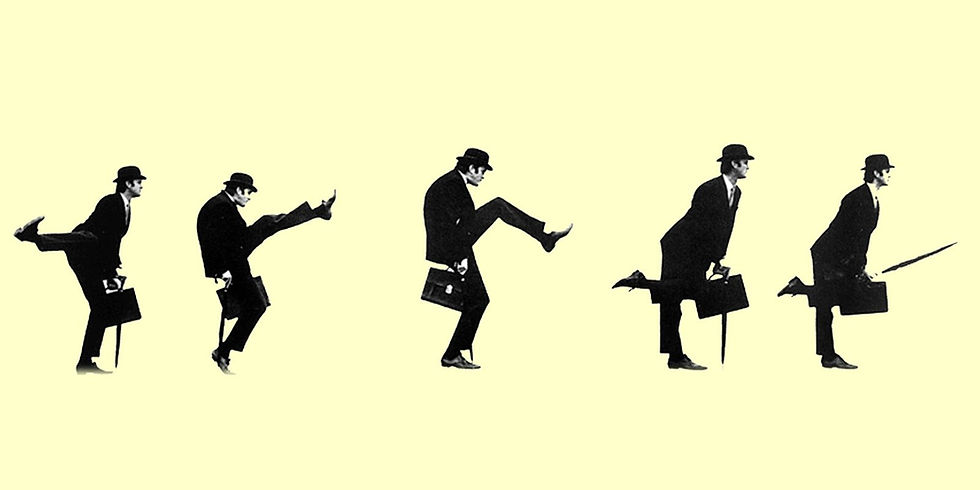Literary fiction. Science facts: rising seas
- Vincent Heeringa

- Mar 13, 2020
- 3 min read
Updated: Apr 1, 2020
One rule of sci-fi is that the universe you create can only be credible when it's consistent. You can't have aliens landing to get your hero out of trouble, Monty Python-style, if there have no been aliens hitherto. You can't have your characters suddenly wave a wand when magic was never part of the deal.

So when I set out to write a post-climate change novel I figured it needed to have a credible scientific foundation, even if it is a fantastical extrapolation of today's world. Probably the three most 'fictions' of this sci-fi are the mutants, the half-human, half-animal hybrids bred for military purposes; the aerotropolis cities, floating above the clouds in counter-grav; and the extent of the flooding caused by rising seas.
Let's deal with the water first. Predictions of sea level rise vary dramatically. The most conservative figures are from the state-owned water and atmospheric agencies such as NASA and, in New Zealand NIWA, which show a global rise of about 3.3mm per year in the last 27 years. If you extrapolate that (they don't, but I did) to 2100, that's a rise of 1.9m. That's pretty high! The 2013 IPCC report was much more conservative, predicting a rise of 26–55 cm if emissions are curtailed or 52–98 cm if emissions are high.
But some studies are much more gloomy. This year Nature published a paper predicting a 5m rise by 2100. "The computed temperature rise at lat 80° S could start rapid deglaciation of West Antarctica, leading to a 5 m rise in sea level." Oh, great.
In Road to Abaddon, the seas have risen to the point where the main coastal cities of the world are catastrophically flooded and the Pacific Island nations have all but disappeared. Is this credible? Well, first, many of the world's great cities are coastal. Think of all the Asia cities like Hong Kong, Shanghei, Tokyo, as well as New York, Hamburg, London, Rotterdam, Copenhagen and LA.
And by 2100 more than 500 million people will live in regions no higher than 5m above sea level. Already 1 billion live within 20 metres.
The displacement of whole cities will put massive pressure on the global economy in the form of refugees and the breakdown of port and trading infrastructure. Plus the billions spent on the mitigation projects like sea walls and levees - which worked so well for New Orleans - will suck money from more productive endeavours.
The real killer though is flooding. Tidal flooding in New York has increased by 247% in some area since 2000. The combination of king tides, melting ice, thermal expansion and extreme weather events could mean some wicked destruction this century. As the NRDC say "as global warming continues to exacerbate sea level rise and extreme weather, the USA's floodplains are expected to grow by approximately 45 percent by century’s end."
In New Zealand a NIWA report showed "72,000 New Zealanders are currently exposed to present-day extreme coastal flooding, along with about 50,000 buildings worth $12.5 billion."
According the news site Newsroom, modelling by NIWA has found that, on average, every 10cm of sea level rise could expose 7,000 more New Zealand buildings to the risk of flooding in the event of a severe, once-in-a-hundred years storm tide. Because so many buildings, airports and roads are on the coastline, the biggest increased risk to New Zealand property will happen within 1m of today's storm tide line.
What does flooding mean? Pressure on insurance companies. Failed crops. Businesses brought to a stop. Roads impassable. Emergency services stretched. Crime sprees. And more money spent on clean ups and mitigation.
The combination of floods and rising seas could lead to the breakdown of order and a collapsed economy, as I have speculated in my novel.
Or not. Despite the terrible effects of Hurricane Katrina on New Orleans, the much touted crime sprees and rioting never actually occurred. The economy is improving and there are predictions that a return to the natural water systems will result in a boon to the fishing industry. Let's hope that's the actual future.




Comments